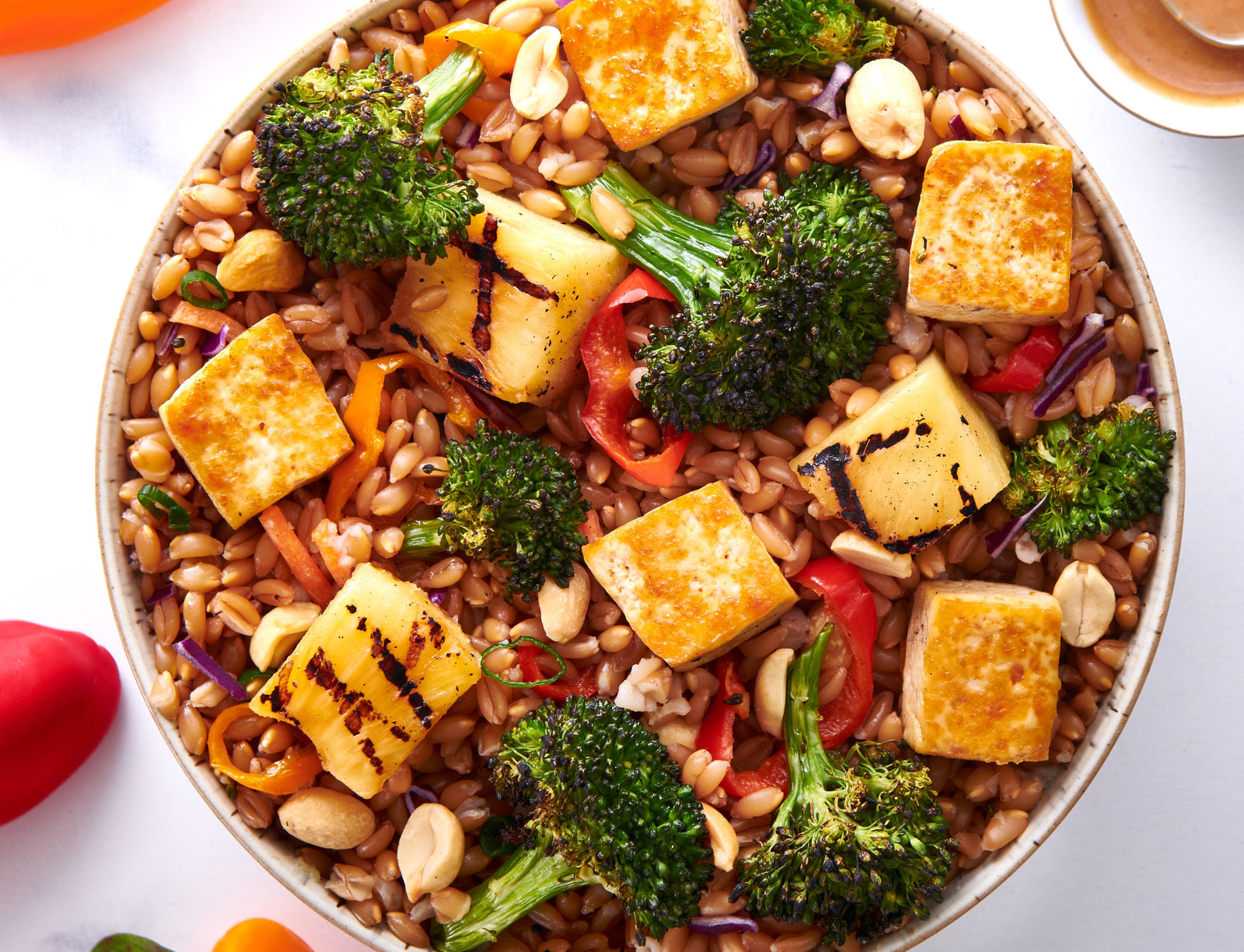How to Start a Plant-Forward Diet


More and more people are embracing the power of plants — from individuals to name brand corporations, plant-forward foods are here for good reason. Not only does eating plant-forward benefit the environment, but the health benefits are overwhelming too: numerous studies have shown that it can lower the risk of heart disease and high cholesterol, help fight certain types of cancers, and is highly effective for combating obesity. Nutritionally, plant-forward diets are also known to be rich in fiber — fiber is a crucial nutrient that helps to regulate digestion and is associated with a lower risk of Type 2 diabetes and heart disease.
But there’s a stigma that eating plant-forward or vegetarian means abiding to an ultra-restrictive regimen with a laundry list of untouchable foods — leaving little else to eat besides a limp, tasteless diet of ‘rabbit food.’ While meat and dairy are limited in a plant-forward diet, it doesn’t necessarily mean no animal or dairy products — merely that you proportionately choose more of your foods from plant sources, in as close to its natural form as possible. It’s a diet rich in veggies, fruits, whole grains, beans, peas, lentils, and nuts. Picture it this way: the more plants you fill your plate with, the less room you’ll naturally have for those meat and dairy products that most meals tend to center around.
At Mosaic, we love ‘plant-forward’ because it’s not the same as veganism — a vegan diet focuses on eliminating all animal products from your diet and lifestyle. As well, plant-forward highlights the importance of whole, unprocessed ingredients. So while a vegan could technically eat french fries and packaged cookies, so long as they’re free of animal products, a person eating plant-forward would avoid them based on how highly processed they are.
With that said, if you’re looking to make the switch to plant-forward, it may not be the easiest thing you’ll ever do — but it very well may be one of the most rewarding. We’ve come up with 7 tips to help you transition as easily as possible into a plant-forward diet:
1. Adjust your Mindset:
Making the choice to go plant-forward may seem like you’re giving up a lot of things. But shifting your mindset from a deficit-based one to an asset-based one will allow you to focus on what you’re gaining rather than what you’re missing out on. Consider why you’re making the switch — maybe you want to lose weight, increase your energy, adopt a healthier lifestyle, or help save animal lives. Whatever your motivation, write it down, post it somewhere you can see, and keep it as a daily reminder of the benefits you’re reaping for your health and the environment.
2. Start Slow:
Going cold turkey on anything is tough — if you can do it, then more power to you! But it’s likely that reducing animal products can feel overwhelming if done all at once — you may want to start by replacing dairy first, then move on to meat and eggs, or vice versa. Here are some other helpful hints for easing into the switch:
- Add more fruits and vegetables into your regular diet. If you’re making eggs, sprinkle in some spinach, or throw in peppers, mushrooms, or onions. Spruce up your lunch by adding a side salad (avocado, chickpeas, and sprouts, anyone?); or top your sandwich with some grilled veggies. For dessert, add a cup of fresh berries to whatever you’re having.
- Swap out meat 2-3 times a week: Once you’ve incorporated more vegetables into your meals, replace meat altogether for a meal or two — try grilled portobello mushroom or a veggie patty instead of a burger; order the tofu or vegetable option if you’re ordering takeout.
3. Use pre-cooked meals:
It can feel daunting to cook up plant-based meals from scratch when you’re used to centering your cooking around a meat dish. Trying out a delicious, plant-based meal that’s ready-made could be the inspiration you need to try out your own, and serve as confirmation that yes — plant-based can be just as delicious as it is nutritious. Not sure where to start? Forgive our shameless plug here, but Mosaic has over 50 sure-to-satisfy meals of chef-created, plant-based goodness.
4. Consider plant-based substitutes of the stuff you “just can’t live without”:
Maybe it’s cream in your coffee; parmesan on your pasta, or cheeseburgers. There are mouthwatering plant-powered versions of all these that will knock your socks off if you’re willing to give them a try. From shiitake bacon to 'cheesy' fermented cashews - there are loads of unprocessed dairy and meat alternatives to try.
5. Stock up on frozen fruits and vegetables:
They’re super convenient to have on hand — plus, buying them frozen rather than fresh wastes less (and saves you money) as you won’t have to worry about them going bad before you’re able to cook them (check out our complete guide on how long frozen veggies will last).
6. Plan Ahead:
Meal prepping may sound like a chore, but taking some time at the start of the week to plan out your meals and what groceries to buy will save you the headache and scramble of trying to figure it all out as you go when you’re hungry and exhausted mid-week. Food prep itself could be as simple as pre-washing and chopping your vegetables, or as involved as cooking and packing all your meals for the week. Experiment week to week and see what feels best for you and your schedule.
Be kind to yourself:
Making a change is never easy, so allow yourself the wiggle room to make mistakes here and there. Transitioning to a plant-based diet is a journey, not an overnight event — it’ll take some experimenting, a lot of trial and error, and some inevitable mishaps. Know that going into the process so you can maintain realistic goals for yourself and keep it positive throughout!

Comments